Peter Dornauf – 23 August, 2013
And then there's the winner. There has to be one, it's the nature of the beast and a shame because any number of the thirty seven included could have walked off with the prize. It was a large looping photograph (pigment inkjet) called Morrison Drive, Hobsonville 23 November 2012. It had political bite, which obviously appealed to the judge, as well as the treatment of subject. What also appealed was the seeming banal nature of the image that hinted at something slightly exceptional.
Hamilton
Group exhibition
2013 National Contemporary Art Award
Selected by Jon Bywater
17 August - 10 November
New Zealand. Two little islands and four million people by last count. A miniscule fraction of that number involved in the visual arts. As a consequence things have the potential to become a little incestuous in the sector, especially when it comes to grants, promotion, selection, that whole thing to do with who gets chosen, who gets coverage, gets kissed - the reviews, the adulation, the advancement, the whole box of tricks.
So it was refreshing to hear that the 2013 National Art Award, currently showing at the Waikato Museum, had for the first time anonymity as part of the selection process. The judge, Jon Bywater, in selecting from several hundred entries, was deliberately kept in the dark as to who the artists were.
This is not to impugn former judges who have by and large done a good job, but it does improve the notion of transparency. It also takes the pressure off the initial cull. In any event, Bywater has made some excellent choices. As with all judging, you can only deal with the material you’re given and the material here stands up to scrutiny.
What was particularly pleasing was to see the presence of fabric work included in the show (actually one of my favourites). It was a piece by Christina Read, called The Benefits of Coconut Oil. Loved the misspelling in the text; loved the conjunction of text and abstract; loved the use of lowly felt as medium and the abbreviated colour dynamic, but most of all loved the totally understated and comic artist’s statement which deserves to be repeated in full. Coconut oil is said to be very good for you. I have forgotten why exactly but apparently it is; I’ve eaten it by the spoonful and I even tried it once as a hair conditioner. Brilliant. The complete lack of pretension spoke volumes in an art theory saturated domain.
A second favourite would have to be a small and beautifully articulated abstract work by Selina Foote, called Lemonnier, part of a reductive oeuvre she’s perfected in recent years where an art historical painting is contracted to simple abstract notations. In this case it is Manet’s Portrait of Mademoiselle Isabelle Lemonnier, circa 1879. Manet made several different portraits of Miss Lemonnier, so it’s a little difficult to see the connection between the originals and Foote’s truncated version, but in the end it doesn’t matter. These are exquisitely rendered compositions which for the artist began by pondering the question, “How might abstract painting function without the apocalyptic myth?” The answer is they function quite well, thank you very much.
My third favourite, if we’re still counting, is the very opposite of the fastidious Foote. It’s a rambunctious, large impasto piece that evidences quite markedly the work of a palette knife and, according to the artist, the manipulative pressure of fingers. This bright and aptly named, Psychedelic River Tribe Moored up for a Trade, is by Brent Hayward, who rattled on with wonderfully shambolic enthusiasm to a floor talk audience about the history behind the painting. “For some time now I’ve been engrossed in history books, pre Treaty times,” is how his wall blurb begins. The painting is a vibrant, energetic, wild, rough, reckless and yet at moments, subtle concoction of things, much like the slightly flamboyant man himself, rings on his fingers and bells on his toes. Welcome back painting.
In his intro to the catalogue, Bywater explains his raison d’etre regarding his selection approach - how he left himself open to every shade of work, from amongst other things, “the quiet as well as the loud, exquisite control and glorious nonchalance.” Hayward belongs to the latter categories, a man in love with the volume and viscous quality of paint which no photo reproduction of the painting could do visual justice.
And then there’s the winner. There has to be one, it’s the nature of the beast and a shame because any number of the thirty seven included could have walked off with the prize. It was a large looping photograph (pigment inkjet) called Morrison Drive, Hobsonville 23 November 2012. It had political bite, which obviously appealed to the judge, as well as the treatment of subject. What also appealed in this work of Dieneke Jansen, was the seeming banal nature of the image that hinted at something slightly exceptional; or as Bywater expressed it, “strikingly ordinary yet also strikingly strange.”
Interestingly the media, always looking for some controversial angle, even where there isn’t one, did their best to manufacture contention. The Herald elected to omit the second half of Bywater’s description so that it read as merely “strikingly ordinary,” while the Waikato Times chose to rark up a storm with a photograph of a merit award piece [not online. Ed.] that consisted of a sun-bleached curtain stapled to a stretcher. Here was a work that might possibly “outrage the easily outraged,” the journo intoned.
Actually the ‘painting’ was quite a beautiful thing, all the more so for being a found object while profundity was added via quotes from both Hegel and Barthes in the brief.
Favourite video: Summit, by Thomas Hinton using images of a site-specific installation made in May, 2013. The date is significant, became significant, even prophetic because the ‘installation’ involved hiring an earthmover to redistribute old milk powder inside an abandoned 1970’s dairy factory. Images of mountains of the stuff pushed up against walls and windows, together with the presence of myriads of dead starlings scattered across snow white floors, provided a disturbing picture, more so since the recent debacle at Fonterra and the associated political fallout connected with our reputation of 100% pure.
Second favourite video: Exercises with Kasanova, by Brydee Rood. A simple film of a horse being ridden, galloping up and down an arena, away from and toward the camera repeatedly, with half a dozen large inflated orange rubbish bags attached to the saddle. Surreal, comical and unsettling all at the same time. Shades of Hinton.
Others of note: An installation comprised of flashing neon light signs advertising Kebabs which frame a painted skull mould, called Persepolis: What lays in the abyss it has created. A work by Shahriar Asdollah-Zadeh. The artist comments about the diaspora of Iranians, stating that “since the Islamic revolution of 1979 the region has been unstable at all levels of society and order.”
Of the four sculptural pieces included, the political work of Janet Knighton, And we dare to dine, stands out: a critique of how we deal with sacred places in New Zealand. Not well according to the artist and her collage of photograph and black painted wooden railings. It references the site of a massacre involving the invasion by Hongi Hika of a pa site near Pirongia where two thousand men, women and children were killed. It is now a picnic site complete with tables for the convenience of passing travellers.
Other abstract works that impressed. A million dots (The small movements that make up the grand gestures ) by Gabrielle Amodeo. Mumu whaariki, by Alexis Neal. Makeshift, by Frances Hansen - and Toby Raine’s Fantanatical ritualistic painted version of cover art from Led Zeppelin’s ‘Presence’ LP.
Thematically, a significant portion of the works had direct or indirect political connotations. But for all that, there was much to love in this show. It’s a diverse range of contemporary art practice which I for one will be revisiting a number of times.
Peter Dornauf


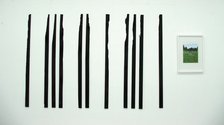


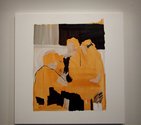
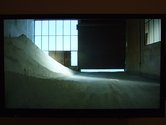
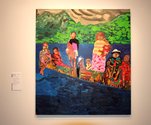
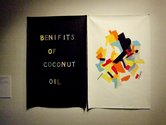
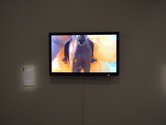
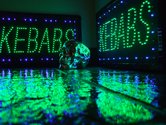

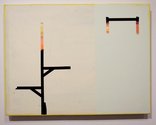
 Advertising in this column
Advertising in this column Two Rooms presents a program of residencies and projects
Two Rooms presents a program of residencies and projects



This Discussion has 0 comments.
Comment
Participate
Register to Participate.
Sign in
Sign in to an existing account.